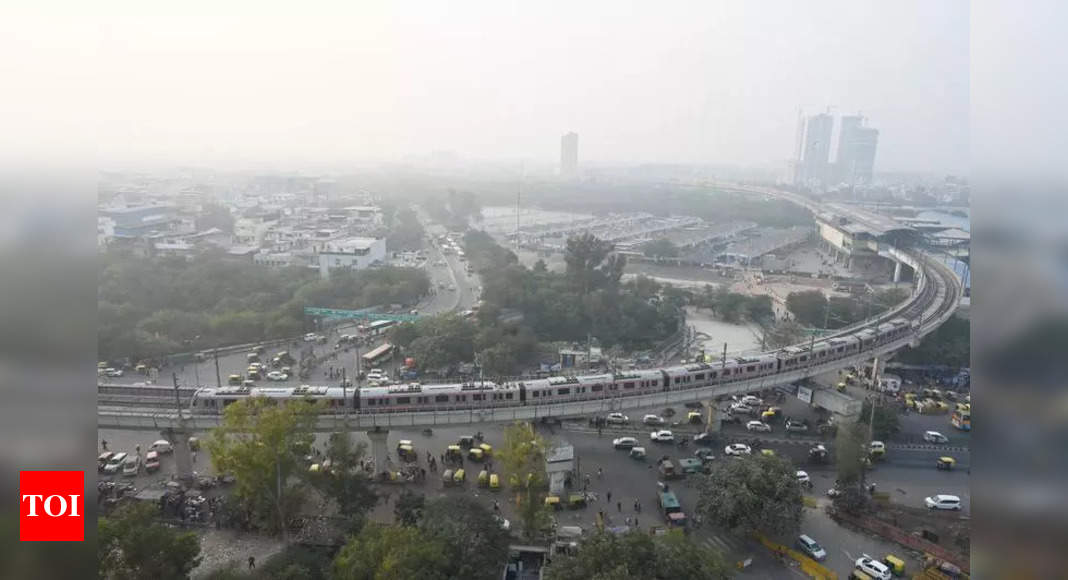New Delhi: The city recorded its fifth severe day of the month as the Air Quality Index rose to 409 on Sunday, compared to 370 in the very poor range a day earlier. The air quality, however, is predicted to improve to very poor on Monday.
Meanwhile, the Met department said there was a possibility of very light or light rain on Monday morning. Another spell of very light to light rain is predicted from Dec 26 to 28.
Central Pollution Control Board’s data showed that Delhi’s AQI was 390 at 8 am, but as calm wind conditions prevailed during the daytime, it rose rapidly and entered the severe category by noon. “Winds of less than 6 kmph blew on Sunday, leading to the accumulation of pollutants. Besides, easterly to south-easterly winds brought moisture to the city, which caused the trapping of pollutants,” said an official.
“Mainly smog conditions with wind speed less than 6 kmph and variable direction prevailed over the region in the forenoon on Sunday,” said IMD.
Delhi recorded four consecutive severe days from Dec 17 to 20, including a severe-plus day on Dec 19 at 451. It was the longest spell since Dec 2021 when a streak of six consecutive severe days was recorded from Dec 21 to 26.
According to Air Quality Early Warning System for Delhi, which is the forecasting body under the Union ministry of earth sciences, the air quality is likely to stay very poor on Monday and Tuesday.
An AQI reading of 50 or below is classified as “good”, while readings between 51 and 100 fall in the “satisfactory” category, and those between 101 and 200 are classified as “moderate”. “Poor” air ranges from 201 to 300, “very poor” from 301 to 400, and “severe” from 401 to 500.
Under the influence of a feeble western disturbance, the city may see very light to light showers during the early hours on Monday. “Another western disturbance is expected to impact northwest India from Dec 26. There is a possibility of very light to light rain from Dec 26 to 28,” said a Met official.
Moderate fog was reported at Safdarjung, which is the city’s base station, with visibility dipping to 400 metres at 7 am. Palam airport recorded the lowest visibility at 600 metres at 8 am.
The maximum temperature was recorded at 24.1 degrees Celsius, three degrees above normal. The minimum temperature stood at 7.3 degrees Celsius, which is near normal for this time of the year.
Gurgaon’s air, meanwhile, continued to remain in very poor zone for the sixth consecutive day with a reading of 338. It was 332 on Saturday. This slight deterioration was attributable to diminished wind speed that made the dispersion of pollutants slower, causing them to linger longer in the atmosphere, rendering the air unbreathable.




